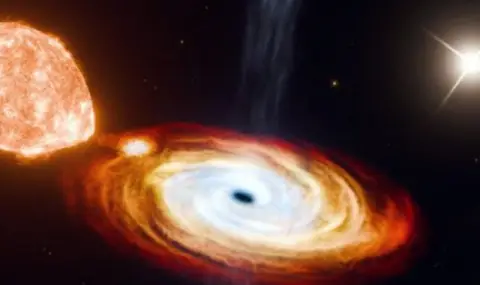The sensational “Three Body Problem” to the Chinese science fiction writer Liu Sixin clearly showed how unstable and therefore rare a phenomenon in the universe a star system of three stellar-mass objects can be. Even more surprising was the discovery of such a system, at the center of which a black hole was discovered for the first time.
The source of information for the discovery is data collected by the European astrometric satellite Gaia. This device creates a dynamic three-dimensional catalog of stars in the Milky Way and a little beyond. Gaia determines the vector and speed of motion of the stars, making it possible to determine gravitationally bound objects and identify binary and even triple systems.
According to Gaia measurements, the system originally thought to be a binary system, V404 Cygni, also includes a third star. The system is 7,800 light years from Earth. Not far from the compact center in the form of a stellar-mass black hole and a nearby star torn from it with an orbital period of 6.5 days, there is a third star, apparently gravitationally bound to the system.
The nuance is that this star is located at a distance of 3500 AU. from a black hole and makes a complete revolution around it in 70 thousand years. This star has been visible before, but only Gaia measurements have been able to show its relationship to the two central objects.
Actually, in such a configuration, the notorious three-body problem is solved in a positive way - such a system will be gravitationally stable for a conditionally infinitely long time. The essence of the discovery is different - the gravitational connection of the third distant star with the central pair is so weak that it seems impossible in this situation.
The fact is that the central black hole must have formed as a result of a supernova explosion, shed its outer shell, and collapsed with its core. All of these violent events should in theory break the weak gravitational link to the third star.
Modelling of the situation with the Cygnus V404 system showed that the inward collapse of the central star is the most likely scenario to describe what astronomers have seen in the Gaia data and subsequent observations of the system. The question immediately arises: is this just luck, or are ternary systems with black holes an indispensable or common stage in the evolution of black holes? Only subsequent observations can answer this question.
